A Who’s Who of Brooklyn Design: The People and Companies Making Their Mark on the Brooklyn Design World

Design is the premiere art form of the 21st century; for this issue, we’ve selected a gaggle of people at the absolute pinnacle of Brooklyn design. Many of the names on this list collaborate with each other, went to the same schools, or feature each other in their stores. Many of them design the objects and spaces we interact with on a regular—and even daily—basis. Because unlike many of the other beautiful objects in our lives, the things designers make invite us to use them; in fact, they demand it. It can be intoxicating to surround yourself with this much beauty, and a true appreciation for a design can make a person act like some caricature of a stoner, turning everyday objects over in the hands again and again, silently appreciating seams or novel details.
Of course, recognizing design as the century’s premiere art form is not necessarily a compliment. Designers embody all of the virtues of our new gilded age, and indeed thinking “like a designer” is preached in boardrooms from Wall Street to Silicon Valley. Designers are fearless, lateral-thinking problem solvers. They are engaged in everyday life. They simultaneously work with their hands—the year’s buzzwords, “craft” and “maker,” speak to that—and utilize the most bleeding-edge technology. Perhaps more than any other artistic endeavor, design whole-heartedly embraces commerce and the market. There is no stereotype of the brilliant but nobly poor designer; the economic health of your practice is widely believed to reflect its creative health. A designer is the ideal 21st Century American.


Flavor Paper
Flavor Paper’s screen-printed, frequently custom wallpapers can be found all over New York’s creative outposts, from WeWork to the Gagosian Gallery’s Madison Avenue shop to Bergdorf, the Wythe, and many spots in between. Though their signature looks usually feature big, bold graphic prints—stylized flowers and flamboyantly colored geometric shapes are common themes—they can also do subdued grays, or classic jacquards, or really anything at all, through their custom prints wing.
flavorpaper.com


MAKE Product Development and Design Studio
This studio’s name might seem a little vague, but it’s for good reason: MAKE is a design firm that wears many hats. It’s taken on everything from instantly recognizable colorful tumblers to hard-ware accessories like an air compressor that defies the conventional black box approach, to updated stacking wire chairs that maintain their characteristic simplicity. The people at MAKE aren’t reinventing the wheel, but they sure have a knack for throwing out the standards that are so ubiquitous they’ve become invisible, and encouraging us to reconsider the objects we surround ourselves with—even if it’s just a fruit bowl.
makeinc.net


Stefanie Brechbuehler & Robert Highsmith
Workstead Studio
The partners at Workstead Studio met at the Rhode Island School of Design, and moved to Brooklyn after graduation to set up shop designing interiors and lighting mostly for private homes around the area. Eventually, the pair scored big with a commission for the Wythe Hotel, which launched them into much deserved prominence within the design world. Their aesthetic involves a sharp devotion to modernism with an eye toward naturalism and rustic elements. Instead of designing interiors that scream new and refurbished, Workstead’s projects are all about blending in with an already established environment, while updating and tweaking certain elements to make something truly warm and inviting.
workstead.com


Vito Acconci
Acconci Studio
Acconci started his career as a poet back in the 60s, later becoming a performance video artist, photographer, videographer, performer, sculptor, audio/visual installation artist, and, then, in the 80s, architectural designer—more or less his focus since. In 1988, he founded Acconci Studio, located on Jay Street, to help realize the architecture and public-space projects he wanted to do but was having trouble getting funded. Why, you ask? Well, this is the same guy that hid under a ramp in NYC’s Sonnabend Gallery and masturbated and talked dirty while gallery visitors walked over him. People were scared. People are stupid. Need proof? Check out “Lobby-for-the-Time-Being” installation in the Bronx Museum of the Arts. It’s been there since 2009 and fills the lobby with a web of white Corian that creates a long, rippling wall that looks like giant paper snowflakes.
acconci.com
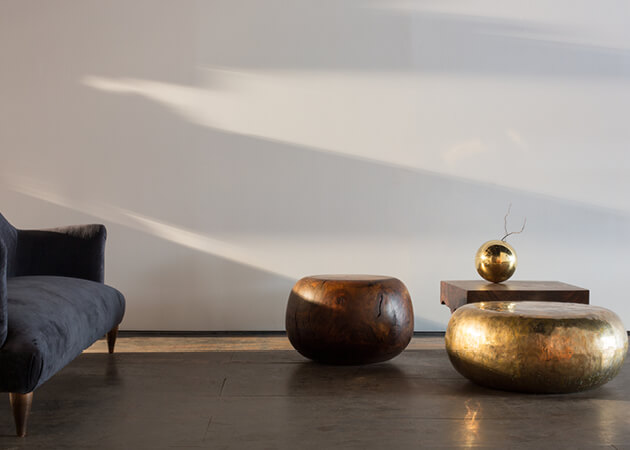

Dave Alhadeff
The Future Perfect
A champion of all things Brooklyn design and one of the scene’s most important players, Dave Alhadeff founded the Future Perfect in 2003. Since then, Alhadeff’s baby has expanded to Manhattan and San Francisco (though the Brooklyn shop has sadly closed). From textiles to furniture—and everything in between—the Future Perfect carries furniture by Michael Anastassiades, Piet Hein Eek, PINCH, Matthew Hilton and Neri&Hu; lighting by Lindsey Adelman, Bec Brittain and Charles de Lisle; and accessories from Luca Nichetto and Golran.
thefutureperfect.com


Tri-Lox
This Greenpoint-based design practice is all about the wood. But the people at Tri-Lox are not your typical carpenters: They’re more adept than almost anyone at providing supremely beautiful, ethically-sourced, tried and true classics. Just look at Tri-Lox’s hand in the Berg’n Beer Hall, Smorgasburg’s newest franchise in the heart of Crown Heights. The woodsmen provided the massive indoor beer garden with its requisite long communal tables—and elongated picnic tables they are not. Rather, Tri-Lox went for a smooth, charcoal finish on reclaimed pine, thus creating tables that bring this beer garden miles away from any other you’ve seen in Brooklyn.
tri-lox.com


Build It Green
While not actually a design studio per se, BIG is an excellent resource for designers and the rest of us willing to take on DIY projects. You can find almost anything at the BIG reuse center in Gowanus, and guess what? It’s all recycled, surplus, or salvaged raw materials, doors and windows, cabinetry, furniture, and architectural details, so it’s loads cheaper and way greener than anything you’re going to find at big box home improvement stores, and has been precisely what’s been driving Brooklyn’s current environmentally responsible aesthetic as of late. bignyc.com


CHIPS
Teddy Blanks is one of three founding partners, along with Dan Shields and Adam Squires, of Williamsburg-based graphic design studio CHIPS, which works on everything from web design to restaurant logos to book covers, notably that of Lena Dunham’s Not That Kind of Girl. Plus, Blanks not only designed the titles for Alex Ross Perry’s film Listen Up Philip, but he also designed the faux-book covers in the end credits, which were all basically works of genius. His typographic 70s-esque aesthetic has fully permeated the design world, and we expect it to continue to do so in the future.
chips-ny.com
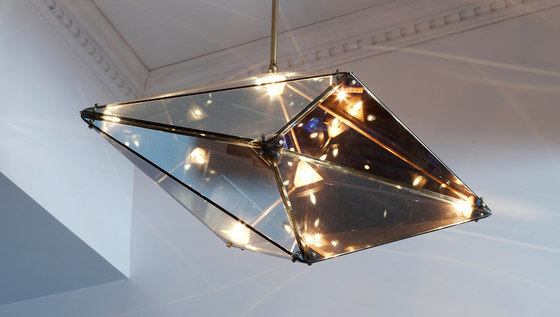

Jason Miller
Roll & Hill
The lighting fixtures Roll & Hill hand-build in their Sunset Park headquarters merge functional elements with Archimedean forms. Miller, a Connecticut native, founded the company in 2010, and his suburban upbringing inspires his designs, some of which are surprising. The 30-inch Maxhedron, with a gold-plated steel frame and mirrored exterior, appears opaque at first; flip it on, and halogen bulbs light up the interior.
rollandhill.com


Stephanie Beamer, Crystal Ellis, and Hillary Petrie
Egg Collective
Egg Collective’s three founders have backgrounds in architecture, art, and woodworking—the perfect starter kit for a design company specializing in heirloom-quality furniture. In 2012, the trio won a “Best New Designer” award at the International Contemporary Furniture Fair for their elegant tables, fixtures, and credenzas.
eggcollective.com


Elodie Blanchard
Blanchard, a Frenchwoman who studied at Cal Arts before moving to Brooklyn, designs curtains and coverings from a range of embroidered textiles: wool and felt, upholstered rayon, patterned cotton, to name but a few. She has her own inclusive lines, but makes custom designs, too, including parlor and master drapes for Bestie Boy Mike Diamond and Tamra Davis’s home.
elodieblanchard.com


David Stark
David Stark Design and Production
Stark is a sought-after event planner whose designs revel in whimsy and surprise. Whether he’s planning a dinner party, wedding, or charitable gala, Stark’s themes are recognizable and consistent: a use of sustainable materials, a vibrant color palette, and flourishes of small details that are wholly consistent.
davidstarkdesign.com
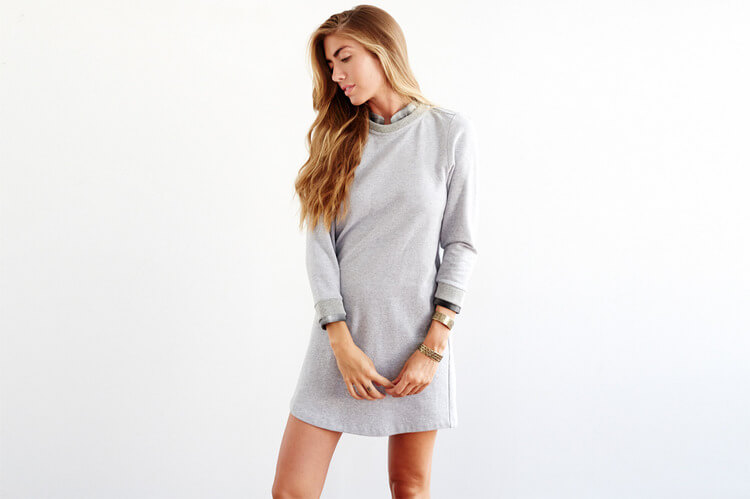

Claire Mazur
Of A Kind
If this list has gotten you excited about just how many designers are out there, working across forms and aesthetics, you’d have something in common with Claire Mazur. Mazur is one-half of the creative team behind Of A Kind, an integrated commerce and content site that promotes on-the-rise fashion designers by hawking limited-edition wares and telling their stories, one at
a time.
ofakind.com


Hecho
Partners Phil Morgan and John Kole began this Boerum Hill design and construction firm, whose name means “made” in Spanish, in 2004. They specialize in using salvaged materials to craft historically-influenced spaces, like Williamsburg concert venue Baby’s All Right.
hecoinc.com
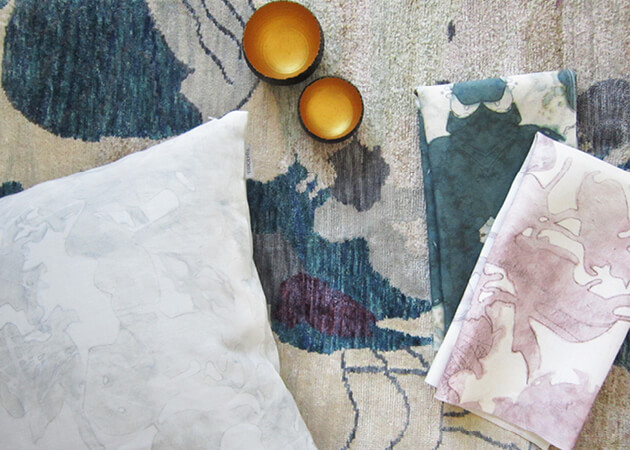

Shanan Campanaro
Eskayel
Campanaro started Eskayel in 2008, after graduating from London’s Central St. Martins design school, and combined her love of fashion and graphic design to make a unique series of patterned objects for the home (principally wallpapers and upholsteries). Drawing inspiration from the natural world, as well as her own peripatetic 20s, Campanaro (now with the input of her partner, Nick Chacon), is building a lushly welcoming and fascinating body of work.
eskayel.com


Payton Cosell Turner & Brian Kaspr
Flat Vernacular
If Flavor Paper is the wild older brother of the wallpaper world, Flat Vernacular is the younger sister, quietly drawing in her room. The designs of this company, founded here in Brooklyn in 2010, straddle the line between graphic design and fine art; they’re abstract color whorls that you can get lost in just looking at them on your computer, let alone staring at them from your couch for a few decades. The brains behind the company are artist and photographer Payton Cosell Turner and graphic designer Brian Kaspr. The company’s designs perfectly reflect the meshing of these sensibilities: a painterly sense of color and interplay given a sort of business once-over by graphic designer.
flatvernacular.com


Brooks Atwood
Designer
Brooks Atwood is a fixture on the New York design scene. Unlike some people who seem to go to events as a primary job, Atwood’s got such a diverse and eccentric resume that it’s no wonder he’s required to show up at every opening in the city. Atwood is: a teacher at Parsons The New School for Design, a former finalist of HGTV’s Design Star (a companion show to The Next Food Network Star, and more or less identical in format), and one of founders and principal designers of POD design, a practice which works across architecture, interiors, products, and digital. His work is often abstract, and features a strongly geometric, vaguely-TRON-ish digital aesthetic. Atwood is very quick to embrace new technologies, and his work especially in the realm of 3D printing is unusually strong.
pod-design.com
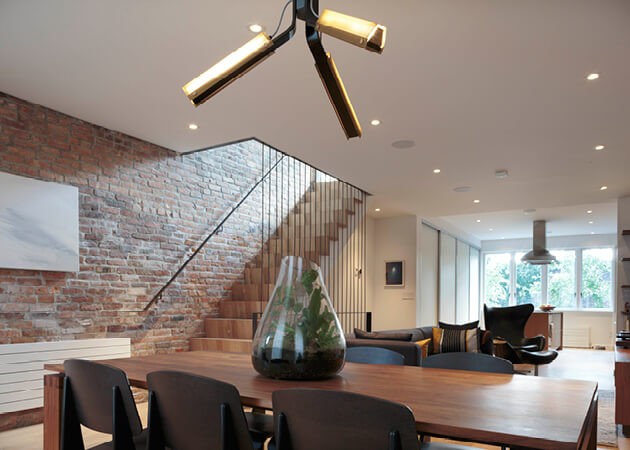

Ben Krone
Gradient Design Studios
After working at starchitect firm SHoP for several years, Krone left to found Gradient Studios, an architecture firm based in Red Hook with an eye toward both high-end design and functionality. Krone bought and rebuilt a Red Hook home that had been destroyed by Hurricane Sandy—a cost effective remodel that featured a glass garage door, an open floor design with potential for modularity, and of course a variety of updates that take into account the house’s flood zone location. Krone has also stamped his brand of imaginative modernism on high-end restaurants, furniture design, memorials, and conceptual structural systems.
gradientarch.com


John McCormick
John McCormick Design
In his interiors, John McCormick specializes in evoking an imagined past. His spaces, like Maison Premiere, Five Leaves, Nameless Bar, and Moto, have helped shape the look of Williamsburg and Greenpoint as they’ve continued to grow up. Some of his common touches include beautiful ceramic work, often stunning tiles or vintage sinks so opulent you hate get them dirty with your dumb hands, fine leather couches, gleaming marble bars, and either complexly-supported metal stools or the kind of simple wooden chairs you imagine you’d have found in a small-town diner in the 1930s. It’s a perfect design counterpoint for the kind of artisanal, revivalist cocktails many of these institutions have popularized: it’s an Old Fashioned, but better than the Old Fashioned any bartender of the 40s could have ever put together.
johnmccormickdesign.com


David Weeks
David Weeks Studio
Would you like your light to also be an impossible piece of engineering, that seems perfectly, serenely balanced until you look very closely and realize just how precisely it’s been engineered? Then David Weeks is for you. Famous primarily for his bubble lights and beautiful mobiles, which you can spot in about half the design showrooms in New York, Weeks’ studio also produces toys, furniture, and one-off concept pieces.
davidweeksstudio.com


Greg Buntain & Ian Collings
Fort Standard
Fort Standard are Brooklyn’s design rock stars. They’ve done backdrops for PS1 Warm-Up concerts, and designed furniture for some of New York’s hippest stores: Warby Parker, Mociun, and Fjallraven. Their own designs—whether in product, furniture, or anything else—are some of the most intriguing mixes of spare and complex available today. Their work is hardly every painted or flamboyant – their marble trivet, for example, is simply a slab of marble, cut into a hexagon, and finished with a simple leather bottom. Still, it’s heartbreakingly beautiful. Either it speaks to something in you that appreciates craft and the natural world, or it doesn’t. If you don’t get Fort Standard, you don’t get design.
fortstandard.com


Jean and Oliver Pelle
PELLE
Spouses Jean and Oliver Pelle met while attending architecture school at Yale. Their practice is one of a surprisingly few architecture practices in Brooklyn doing truly stunning residences around the country. PELLE’s bread and butter, though, are its charming products—soaps, necklaces, candleholders, mirrors, and more—that are a supremely approachable alternative to some of the more self-consciously “designy” design labels.
pelledesigns.com


Pratt Institute
Pratt was in Clinton Hill way, way before you. The institute first opened its doors in 1887; to give you some perspective on how long ago that was, its founder, Charles Pratt, had made his fortune by being in the petroleum business as the country abandoned whale oil.
Pratt is our RISD: home to a vibrant class of young creatives you’re as likely to run into at an illegal concert in some strange basement as at an opening. This crackling creativity, this willingness to do things your own way, is indicative of the architects, designers, and fine artists who have studied there. It’s an extremely diverse group, and includes the musicians Rob Zombie and John Flansburgh (of They Might Be Giants). More to our point, the institute has a long and storied list of artists and designers who have attended, including Robert Mapplethorpe, Bestsy Johnson, Charles Pollack, Stefan Sagmeister, and Jack Kirby, the creator of the characters at the heart of several billion dollars in box office revenue: Captain America, Iron Man, Thor, and The Avengers among them.
pratt.edu


Caitlin Mociun
Mociun
Every sidewalk fair in Brooklyn is full of handmade jewelry. As it turns out, it’s relatively easy to make! There is so much out there, in fact, that it’s easy to not appreciate fine work when it happens to cross your path. Don’t make that mistake with the work of Caitlin Mociun. A California native who started her own line in 2006, Mociun makes necklaces, earrings, and especially rings in beautiful geometric shapes: not just the ones you expect (pyramid, cone), but also ones you don’t (cube). Since 2012, Mociun has also operated a beautiful Williamsburg store under her own name, an oasis of taste and good sense among the super wealthy shadow state that’s sprung up along the Williamsburg waterfront; if the crowd there supports this remarkable endeavor, it’s at least doing some good.
mocium.com
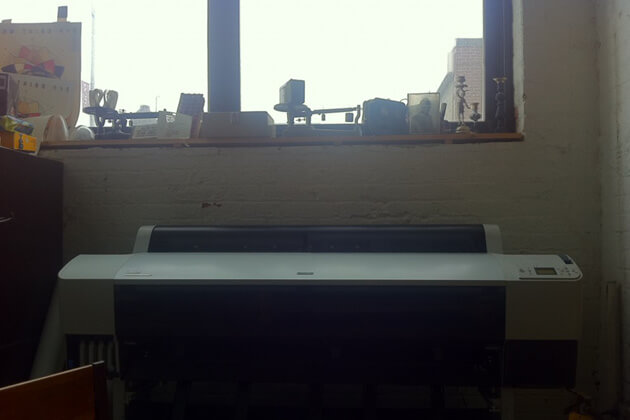

The Gowanus Studio
The Gowanus Studio Space is a non-profit organization in a beautiful industrial space that provides designers with all the resources they need to make their artistic aspirations a reality. Every six months, the GSS offers a residency program to three printmakers, giving them unlimited access to intaglio, lithography, relief and silkscreen facilities, including all related photo-based processes and large format digital printing.
gowanusstudio.org


Cody Hoyt
Sculptor and painter Cody Hoyt creates intricate, meticulously-made ceramic pieces, like his octohedron-shaped planters, that are both beautiful and functional. It’s like being able to keep your potted plant in a work of art.
codyhoyt.tumblr.com
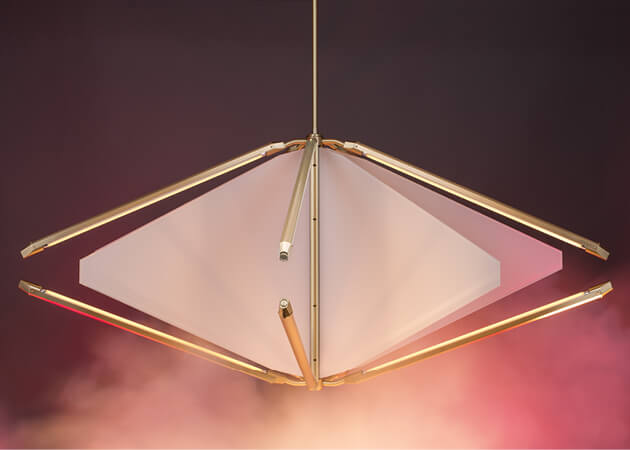

Bec Brittain
Bec Brittain is serious when it comes to her primary work: creating lighting. Her most iconic pieces are hanging lights made of several long, slender lighted tubes beautifully joined. They don’t so much resemble lights put together as glowing lines joined to form a single shapes (you’ll see these in the other half of New York’s design showrooms). Her other pieces, however, can incorporate brass or marble to
stunning effect.
becbrittain.com


Donald Rattner
The Creative Home
Putting a bunch of smaller pieces together to create something larger and more complex, that’s, like, the basis of all types of creation, right? Right, but more specifically, that’s modular art. Architect Donald Rattner became fascinated with modularity in 2001 after receiving an architectural commission to design a cluster of prefabricated modular structures. Since then Rattner has explored the theory and incorporated modular art with his own architecture projects. In 2009 Rattner created MODULE R, a marketplace for modularity from around the world right in Brooklyn, which includes design pieces for the home that are flexible, customizable and interactive. And now with the online-only operation known as The Creative Home, Rattner continues to introduce Brooklyn (and the world) to modular design.
thecreativehome.com


Emily Sugihara
Baggu
Seemingly over the course of a single summer, New York City had a favorite new casual bag: Baggu. They’re sturdy, have both handles and a shoulder strap, which somehow no one had yet tried on a tote bag (?!), and come in a few simple patterns that easily match basically anything. Since the early days, the company, founded by Parsons graduate Emily Sugihara has branched out in a million directions: new colors, a high-end leather line, duffles, backbacks, and shopping bags, occasionally collaborating with other stores (like Mociun, who gives out all purchase in their own custom nylon Baggus). Still, it’s that original Baggu which will always have our heart. And get this: It’s still only $26.
baggu.com


Chen Chen and Kai Williams
This pair met at Pratt in the late 2000s. After some time working apart they began collaborating in 2011. Their breakthrough pieces are their colorful coasters, which look like they’re made out of a pot of melted crayons, dried and sliced. The pair isn’t resting, however, and in addition to continuing to produce their hit pieces, have also been making furniture, art shanks (yes!), and deliciously round marble bangles.
chen-williams.com
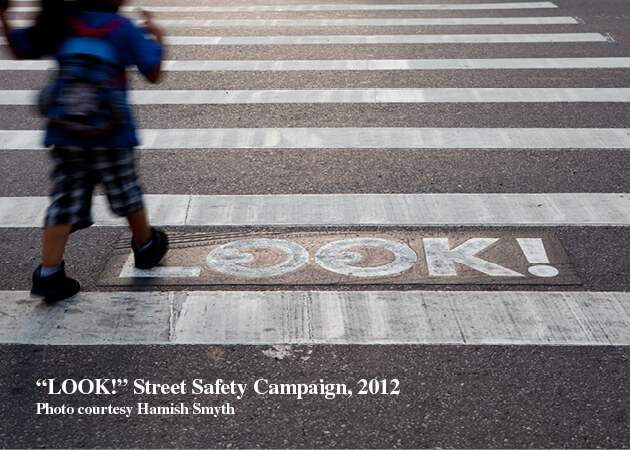

Hamish Smyth
Graphic designer
In 2012, graphic designer Hamish Smyth, along with fellow designer Jesse Reed, both of design firm Pentagram, discovered something in the basement of their office: the 1970 New York City Transit Authority Graphic Standards Manual. Uh, what is that? Well basically, in the 1960s, the subway map was a confusing hodgepodge of signs with inconsistent type, sometimes even handwritten, making navigating the subway total hell. It wasn’t until 1970 when the new manual was created that the subway finally got the signature signage that we still see today. To celebrate that, Smyth and Reed created a website with scans of the manual, and it was so immediately successful that they decided to approach the MTA about republishing the manual as a book. Prior to this, Smyth has worked at Pentagram under Michael Bierut on successful design projects dealing with transit and commuters including the LOOK! (left and right before you cross the street, and for cyclists) campaign and the new WalkNYC map system.
hamishsmyth.com


Tina Roth Eisenberg
The design world is not without its faults. It has an unfortunate tendency to take itself extremely seriously. Not all the time, but often. In rides Tina Roth Eisenberg to the rescue. She helms not just one, but two major (and majorly selfless) design projects: Creative Mornings and Tattly. Creative Mornings is a free breakfast lecture series, focused loosely on design: think TED talks, but with an emphasis on design and community building. They are free to attend, and exist solely to get people together in a room talking about ideas that fascinate them. Tattly, on the other hand, is pure fun. Founded by Eisenberg in 2011, they have an incessantly updated roster of beautiful temporary tattoos, from watches to ships to cute animals, cameras, typewriters, and even the CMYK colors.
tattly.com


Fredericks and Mae
For whatever reason, beautifully deadly objects are a favorite of the design world. The duo of Jolie Mae Signorile and Gabriel Fredericks Cohen make many things but their signature pieces are undoubtedly their arrows. Running about $95 per, they’re fletched with turkey, peacock, or macaw feathers and are officially “for ceremonial use only.” Each one is also surrounded in thread of multiple colors and arrangement, producing a slim, colorblocked shaft that you improbably want to grab and hang above your bureau, even if you’ve never shot an arrow in your life. Equally pointy and beautiful are their darts, fat wooden ones of the old style, also available in a dizzying mix of color combinations. Some of their new work, particularly their strange hoop brushes (wooden loops with bristles on one segment, in a variety of sizes) seem destined to be future classics.
fredericksandmae.myshopify.com


Souda
Souda is the project of Shaun Kasperbauer, Isaac Friedman-Heiman, and Luft Tanaka, a trio who met while students at Parsons. Their Kawa series of ceramic vases and bowls, made in reusable leather molds, whose creases and seams give the ceramics a deceptively supple appearance. For a finish, Souda paints the inside in either primary colors or a bright, reflective gold that gives an astonishing and eye-catching counter-point to the white exteriors. Souda also makes a range of chairs, lights, and other housewares—their Fin Series of trivets, essentially a perfect square with many raised lines, holding up your hot items and allowing air to circulate underneath, are a particular favorite.
soudasouda.com


Moving Mountains
The brainchild of Syrette Lew, Moving Mountains specializes in design that is both functional and inviting, including an array of jewelry and handcrafted bags, which all make a drool-worthy Instagram feed. But perhaps the stars of the studio are Lew’s quirky, charming furniture pieces, from a set of nesting tables to a stairstep-inspired hi-lo shelving unit. mvngmtns.com


Grace Bonney
Design*Sponge
If, strolling around the internet, you find yourself somewhere that features photos of “Welcome Home” scrawled artfully on a chalkboard, a beautifully lit pink cocktail, and a tour of someone’s home, who perhaps has quirky dinner plates mounted on her wall (maybe there are cartoon foxes painted on them?), you’ve likely landed at Design*Sponge, or one of the hundreds of sites it inspired. Started a decade ago by Bonney here in Brooklyn, Design*Sponge was at the forefront of what you could call the Pinterest revolution—the movement of doing things yourself, beautifully, and taking the best pictures of them you possibly can to show off online.
(Read our interview with Bonney on p. 72.)
designsponge.com


Bower
Co-founded by Danny Giannella and Tammer Hijazi in 2013, Bower Studios plays with geometric shapes to make everything from cutting boards to mirrors look like fun, functional, math class props.
bowernyc.com


Sohrab Bakhshi
City Foundry
Improbably, a stretch of Atlantic Avenue in the nether region between Park Slope, Cobble Hill, Clinton Hill, and Downtown Brooklyn is the absolute center of the upscale antiques world in Brooklyn (and all of New York, you could argue). City Foundry, founded by Sohrab Bakhshi, is one of the main reasons for this. When it opened 15 years ago, in 2000, it was one of the first, offering everything from garden furniture to industrial castoffs to vintage metal works. Of course, the flashiest parts of its inventory of are the sumptuous collection of mid-century furniture. These days, it’s equally popular with private buyers and set dressers and photo shoot stylists who need its impeccable mid-century credenzas and mod 60s bubble lights. cityfoundry.com


Calico Wallpaper
Calico Wallpaper is the absolute pinnacle in luxury wall coverings. Co-founded by artist Rachel Mosler and interior designer Nick Cope as they were stuck in their apartment during Hurricane Sandy, Calico combines paper-making and dying techniques from all over the globe, a bit of Turkish here, a bit of Japanese there, and put the absolute best of it into their work. Calico wallpapers can make your walls look like they’re shot through with gold, or as if they’ve been made out of gold all along, which you’ve revealed by cracking the plaster. Their work is true and deep luxury, and has a price tag to match.
calicowallpaper.com
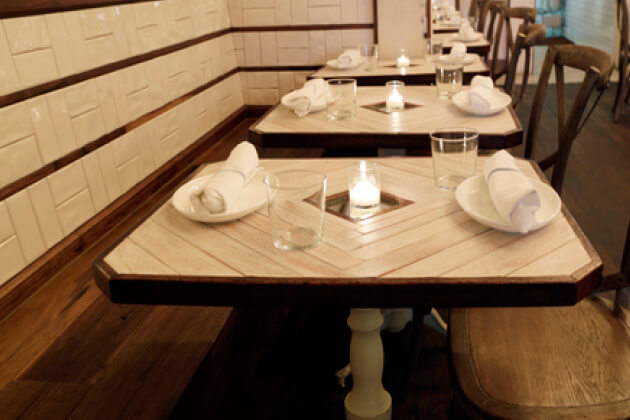

Haslegrave brothers
hOmE
If you’ve been to a really beautiful bar or shop or restaurant lately in New York, you likely have Evan and Oliver Haslegrave to thank. Working jointly under the name hOmE, the pair (usually referred to as the Haslegrave brothers) has pioneered the simple and luxurious, vaguely Scandinavian aesthetic that currently has most of Williamsburg and SoHo in its grip. Its projects—The Manhattan Inn, Black Seed Bagels, Mast Brothers Chocolate, Tørst, Paulie Gee’s, Alamadea, and many more—all share a few common traits: white walls, unlabeled beer taps, brass fixtures, interesting glasswork, and somehow luxurious plain wood seating.
home-nyc.com
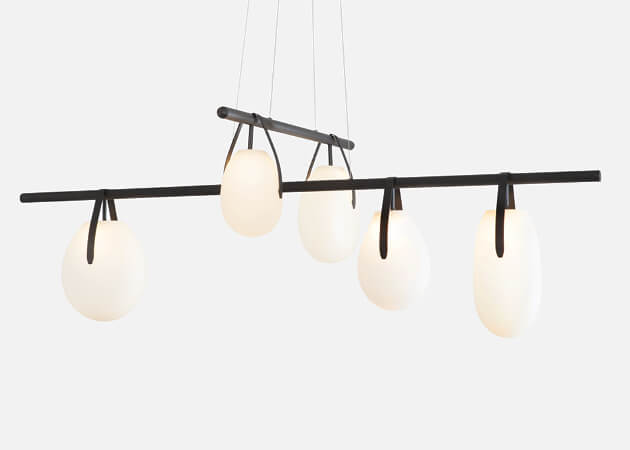

Rich Brilliant Willing
Rich Brilliant Willing are more than that amazing tote bag your cool friend has. Started in 2007 by another trio of young school mates, Theo Richardson, Charles Brill and Alexander Williams, RBW’s core practice is functional and fascinating LED lights. Already nominated for a Cooper Hewitt National Design Award, RBW’s lights are deceptively simple table lamps and hanging pendants which reveal the depth of artistry on closer examination—their Delta series, in particular, is remarkable, featuring tightly pleated, multi-part shades in midnight black.
richbrilliantwilling.com


WorkOf
Launched earlier in 2014 by John Neamonitis and Charlie Miner, WorkOf is a showcase for local, independent makers of furniture, lighting, and decor. Through their online hub, WorkOf also makes it easy for consumers to connect with a host of different Brooklyn-based artisans.
workof.com


Athena Calderone
Stylist/Interior Decorator
Athena Calderone is a lifestyle icon. Google her name and you can see what the world wants to know about her in the ghostly autocompletes: wedding (beautiful, covered in New York Magazine), Instagram (a neverending cascade of beautiful food, beautiful locations, and Athena herself broadcasting to tens of thousands of fans), husband (the music producer Victor Calderone), and home (currently an sumptous Dumbo loft with a vertiginous view of Manhattan). She is living her best life, and is available to share it with you, all over the internet, including at her blog, Eye Swoon.
eye-swoon.com
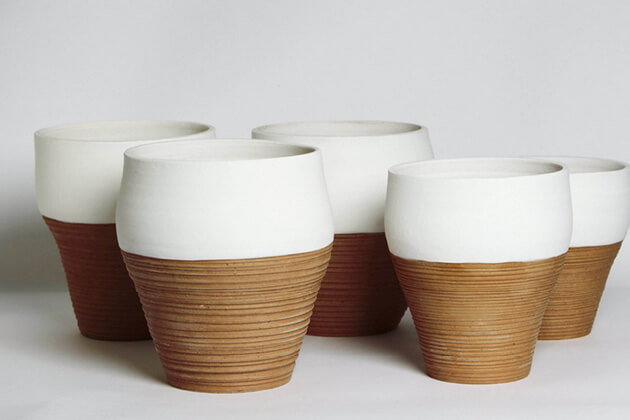

Helen Levi
At her studio in Sunset Park, ceramicist Helen Levi makes simple, functional, and visually interesting pottery, everything from pineapple salt and pepper shakers to earthenware bowls to gilded hand jewelry.
helenlevi.com


Doug Johnston
Doug Johnston is very good with rope. Since 2010, his Brooklyn-based studio has been coiling and stitching ropes into what his bio coyly refers to as “a variety of sculptural and functional objects.” This is putting it somewhat mildly. Johnston’s work—which usually resemble bowls or vases made from some unidentifiable cloth—come in a truly dizzying variety of sizes, shapes, and colors. Each of his pieces is unique, and surprising. Perhaps this is why they’re such a hit.
dougjohnston.net
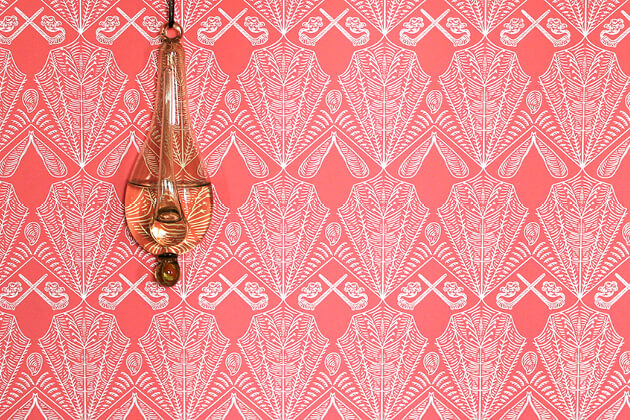

Katie Deedy, Grow House Grow
Designer and illustrator Katie Deedy specializes in wallpaper design. Does that sound boring? It isn’t: Deedy and her company Grow House Grow sell narrative-inspired papers that are both sumptuous and intricate, bedecked with everything from mesmerizing geometric patterns to whimsical pen-and-ink drawings of monkeys smoking pipes. Their motto is that a good story is important for the design of your home. “It’s important to fill our living spaces with things that create an environment that is both personal and universal,” Deedy explains on the Grow House Grow site. “Deedy also creates stylish custom-designed fabrics and tiles, and some of her wallpaper now hangs in the Brooklyn Museum’s permanent collection.
growhousegrow.com
You might also like 



















